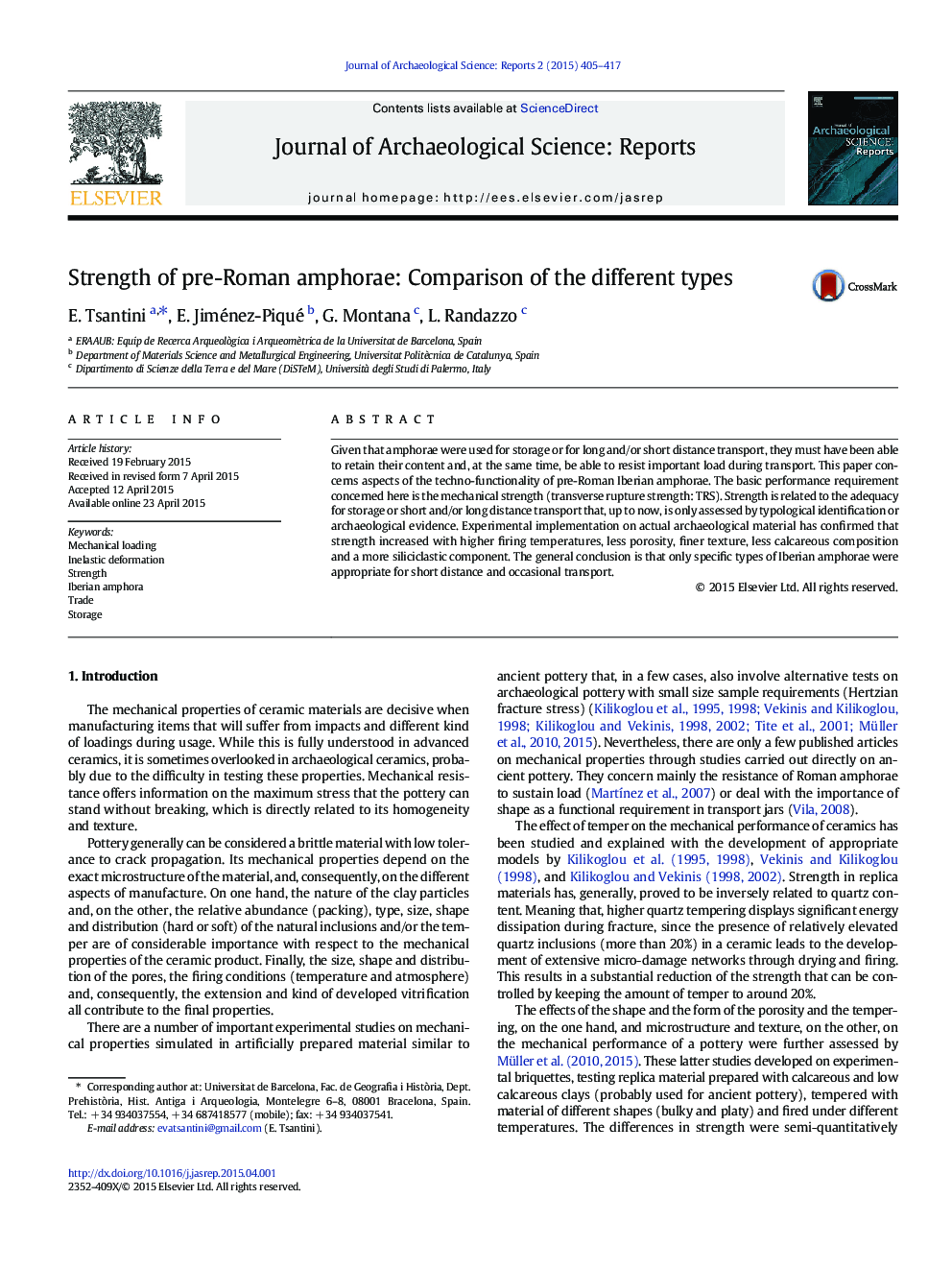| Article ID | Journal | Published Year | Pages | File Type |
|---|---|---|---|---|
| 7446513 | Journal of Archaeological Science: Reports | 2015 | 13 Pages |
Abstract
Given that amphorae were used for storage or for long and/or short distance transport, they must have been able to retain their content and, at the same time, be able to resist important load during transport. This paper concerns aspects of the techno-functionality of pre-Roman Iberian amphorae. The basic performance requirement concerned here is the mechanical strength (transverse rupture strength: TRS). Strength is related to the adequacy for storage or short and/or long distance transport that, up to now, is only assessed by typological identification or archaeological evidence. Experimental implementation on actual archaeological material has confirmed that strength increased with higher firing temperatures, less porosity, finer texture, less calcareous composition and a more siliciclastic component. The general conclusion is that only specific types of Iberian amphorae were appropriate for short distance and occasional transport.
Related Topics
Social Sciences and Humanities
Arts and Humanities
History
Authors
E. Tsantini, E. Jiménez-Piqué, G. Montana, L. Randazzo,
